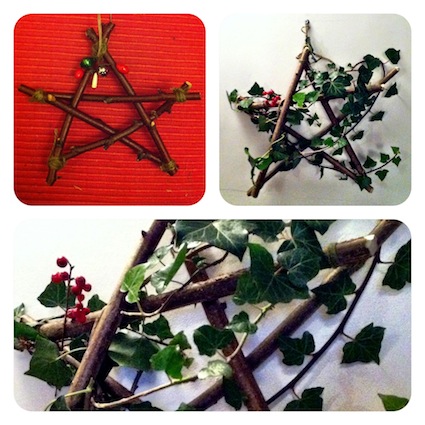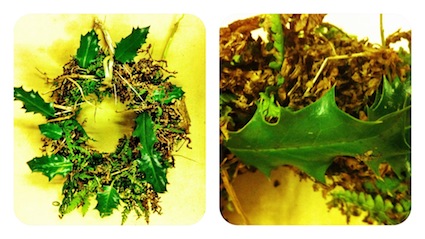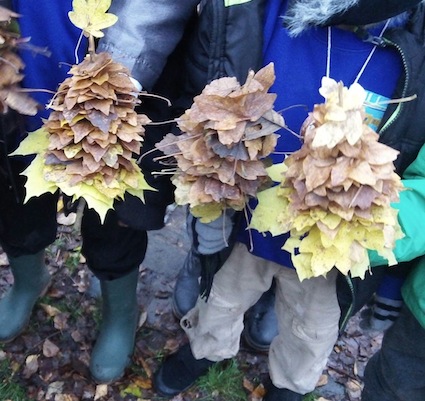The run-up to the end of this term is usually a hectic event. In between the parties and performances, there’s lots going on. It also means that using the festive opportunities to recap and review work undertaken earlier can be one way of working a little smarter. So, with this in mind, I thought I would illustrate the possibilities of nature craft activities as a way of undertaking some practical maths.
At this point I need to tell you that this idea was inspired by the wonderful photos in this post. They are not mine but the work of Lily Rowe-Horseman of Kindling. On her Facebook and Pinterest pages she has other examples of creative artwork, many of which are nature-based or can be undertaken outside.

In the photo above, Lily created these rustic snowflakes. They are a lovely technology project involving hot glue guns and patience. It is also an opportunity to review concepts around symmetry – along one or more axis or even rotational symmetry. A possible follow-up investigation is to see if the number of angles in the snowflake is directly linked to its rotational symmetry….

Making stars is a popular activity. Using sticks to do this creates wonderful maths challenges. The first is to find five straight-ish sticks of the same length (or six, if you decide to make the Star of David). Next is working out how to weave these together. The final task is to work out how to lash the sticks together so that the star doesn’t fall apart. With younger children using elastic bands might be easier. A good extension of this activity is to challenge older children to draw a five-pointed star without lifting their pencil off the paper. This can also be done outside with a stick drawing in mud, sand or snow. From here, the children can use long willow stems which may be available after pruning a willow structure. The children have to work out how to measure the willow stem accurately and to fold it so that it creates a star without the need for it to be cut.

The wreaths in the above photos have been made from dead bracken which appears to make a very good base for sticking leaves and other natural objects into. This can be used to explore of revise aspects of pattern work. For example, can we create a translating pattern? How about a pattern with vertical reflective symmetry? Are there examples of spiralling patterns we can create by weaving or sticking objects into the wreath?

Previously I’ve blogged about berries on wire. Rosehips are still present in my garden and these work well for this activity. I thought children may enjoy creating simple maths challenges based upon threading berries onto wire. For example, how many different wreath shapes can be made with 18 berries? Does this change if you use 24 berries or 30 berries? Remember there must always be a gap in the middle with a wreath.

Finally, I had to show off the wonderful leafy trees created by children attending a Forest School session run by Alex Douglas-Kane, who has kindly allowed me to post the photo above. This gathering activity is a little more challenging than its first appearance. The children used a stick onto which they threaded the leaves. However care had to be taken to ensure the leaves became progressively smaller as they were stacked on top of each other. Decisions had to be made about the leaf colours and sizes and the whole task involved ongoing estimation of size. Thanks Alex!
This blog post was originally posted in December 2013.




















Some gorgeous craft ideas here, lovely! #CountryKids
Thanks Sara – I can’t take credit for these – definitely a big thumbs up to Lily and Alex 🙂
love this post, what a great way to extend maths into the festive seasan
Thank you! So many possibilities… too little time to blog about them! 🙂
Hadn’t seen this! Thanks for the mention, Juliet 🙂 Alex
You’re welcome Alex – great photo of a super activity.